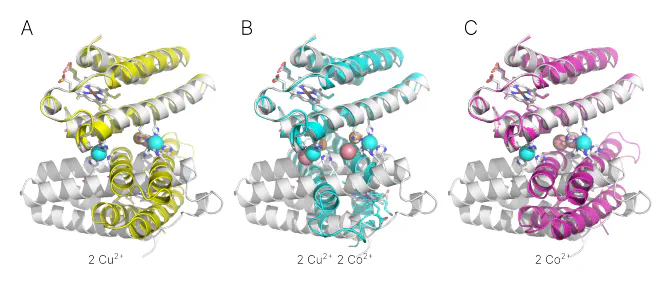Predicting metal-protein interactions using cofolding methods: Status quo
 Image credit: Unsplash
Image credit: UnsplashAbstract
Metals play important roles for enzyme function and many therapeutically relevant proteins. Despite the fact that the first drugs developed via computer aided drug design were metalloprotein inhibitors, many computational pipelines still discard metalloproteins due to the difficulties of modelling them computationally. New “cofolding” methods such as AlphaFold3 (AF3) and RoseTTAfold-AllAtom (RFAA) promise to improve this issue by being able to dock small molecules in presence of multiple complex cofactors including metals or covalent modifications. Here, we analyze the current status for metal ion prediction using these methods. We find that currently only AF3 provides realistic predictions for metal ions, RFAA in contrast does perform worse than more specialized models such as AllMetal3D in predicting the location of metal ions accurately. We find that AF3 predictions are consistent with expected physico-chemical trends/intuition whereas RFAA often also predicts unrealistic metal ion locations.
Type
Publication
ICML24 Workshop ML for Life and Material Science From Theory to Industry Applications
Click the Cite button above to demo the feature to enable visitors to import publication metadata into their reference management software.
Create your slides in Markdown - click the Slides button to check out the example.
Add the publication’s full text or supplementary notes here. You can use rich formatting such as including code, math, and images.